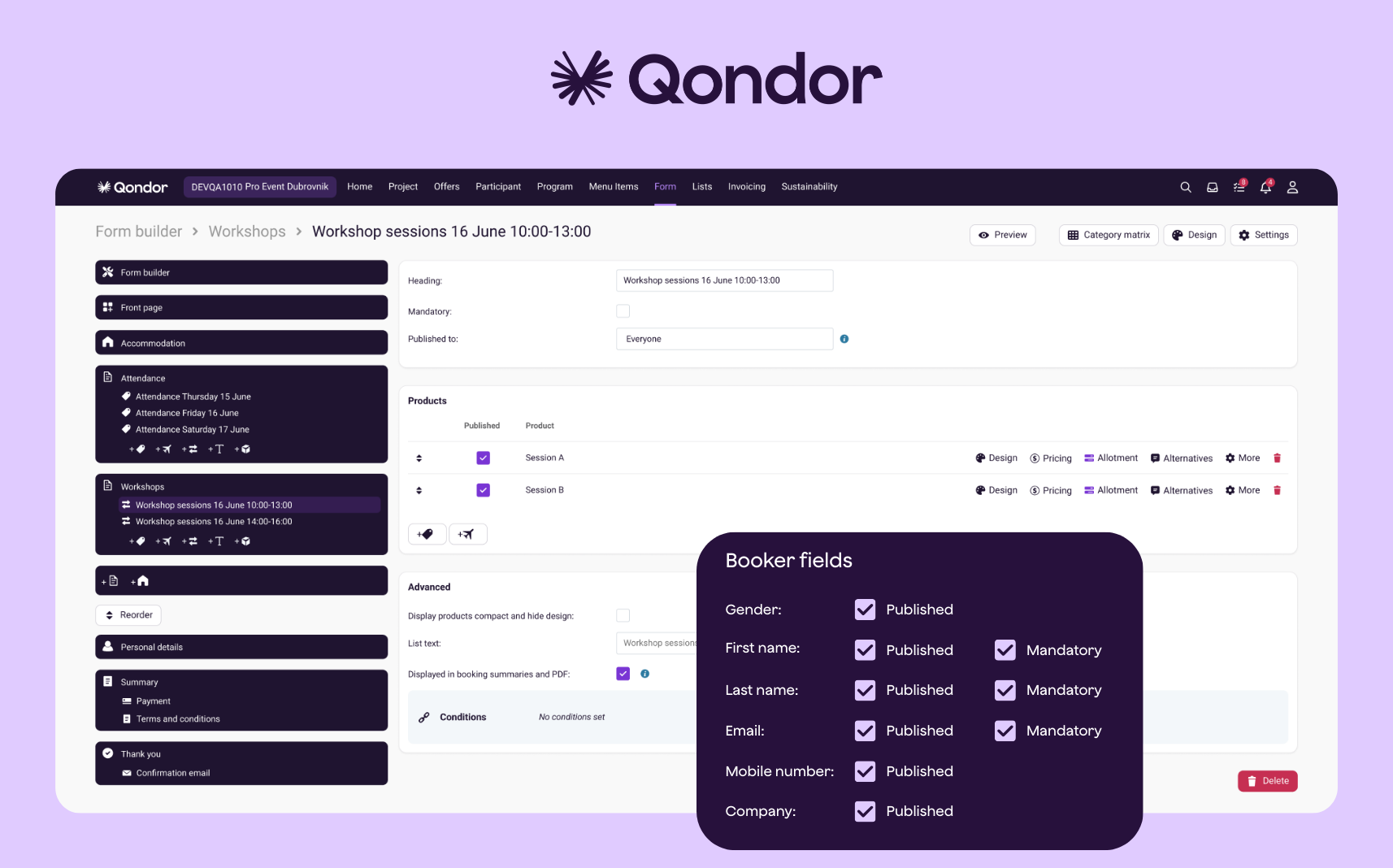Quick answer: what is an event registration form?
An event registration form collects attendee details, preferences and payment so you can confirm places and manage capacity. A good form is mobile first, short, secure and clear about pricing and what’s included.
Who this article helps: agencies, TMCs, DMCs, venues and in-house teams running meetings and events.
How to design a high-converting event registration form.
Start with the offer.
Make the value obvious at the top. Include who it’s for, what’s included, date, location and price. Keep the copy scannable.
Use the fewest fields possible.
Ask only what you need to deliver the event or invoice. Add advanced questions after payment if required.
Mobile first.
Single column, large touch targets, autofill enabled. Preview on a recent iPhone and an Android device.
Pricing clarity.
Show totals including VAT by default. If you sell internationally, make exchange rates clear.
Payment trust.
Use SCA-ready gateways and common local wallets. Show badges and explain what happens after payment.
Capacity rules.
Set limits per ticket, room or session.
Accessibility and language.
Meet basic WCAG guidelines. If you expect international guests, add a language toggle.
Privacy confidence.
State why you collect data, how long you keep it and link to your policy. Let people edit or delete their data on request.
Template: copy-and-launch essentials.
Required fields.
- First name.
- Last name.
- Work email.
- Company.
- Role.
- Category or ticket type.
- Dietary needs or accessibility notes.
- Consent to terms and privacy.
- Travel details for sustainability reporting.
Conditional fields by category.
- Arrival date.
- Departure date.
- Session selection.
- Invoice address.
- Purchase order number.
Payment section.
- Summary with VAT.
- Accepted methods.
- Invoice option if applicable.
Confirmation screen.
- Booking summary.
- Add-to-calendar.
- Receipt or invoice.
- Edit details link.
- Contact email.
Keep it to 12–15 visible fields for most corporate events. anything more should be conditional or post-registration.
Specifics you should not skip.
- GDRP: explicit consent check boxes, purpose limitation and a defined retention period.
- Payments: strong customer authentication, 3-D secure, local currency by default, refunds and partial payments when needed.
- VAT: itemised invoices with correct VAT rates per line. support multi-VATif you serve multiple regions.
- Access control: verification codes for invite-only forms and rate fences for special pricing.
Quick fixes for common problems.
- Completion is low: shorten the form, move non-essential questions to a follow-up, and add trusted payment options.
- Drop-off at payment: show the full price earlier, include fees and VAT, and allow invoice for corporate buyers.
- Overbooking: enable hard capacity per ticket and auto-close when full. use waitlists.
- Group bookings are messy: let a primary booker add guests and assign categories. limit per-guest fields to essentials.
- No-shows: send a logistics email 24 hours before start. Use wallet passes and reminders.
- Data is inconsistent: use dropdowns and validation. keep free-text to a minimum.

Frequently asked questions about event forms.
What is the ideal length of an event registration form?
12–15 essential fields for most corporate events, with extras shown only when relevant
. Shorter forms convert better.
How do i increase event registration form conversion?
Reduce fields, write a clearer offer, show VAT-inclusive pricing, enable SCA-ready payments and send automated reminders.
What should an event registration form include?
Essentials only. Attendee details, ticket type, accessibility or dietary notes, clear pricing with VAT, SCA-ready payment and GDPR consent.
How do I handle group registrations?
Allow a primary booker to add guests, assign categories and copy shared details. collect only per-guest essentials.
What’s the difference between a registration form and ticketing?
Registration forms support B2B data capture, compliance and complex capacities, not only tickets. They are designed for corporate events and procurement.
24-hour implementation checklist.
- Publish the form with mobile-first layout and a clear value statement.
- Set capacity per ticket and enable waitlists.
- Enable local currency payments with SCA and show totals including VAT.
- Add confirmation, reminder and final logistics emails.
- Test the full flow on two devices and a slow connection.
Why Qondor is the right choice for your event registration forms.
If your goal is to run more efficient, profitable and sustainable events, Qondor brings proposals, registration, payments and communications into one place so your team moves faster and your data stays clean. You get higher form completion, fewer handoffs and client-ready reporting, including co₂ summaries when you collect travel and accommodation details. That means clearer value for buyers and hours back for your team.
Ready to turn event sign-ups into smoother delivery and stronger reporting?
.png)
